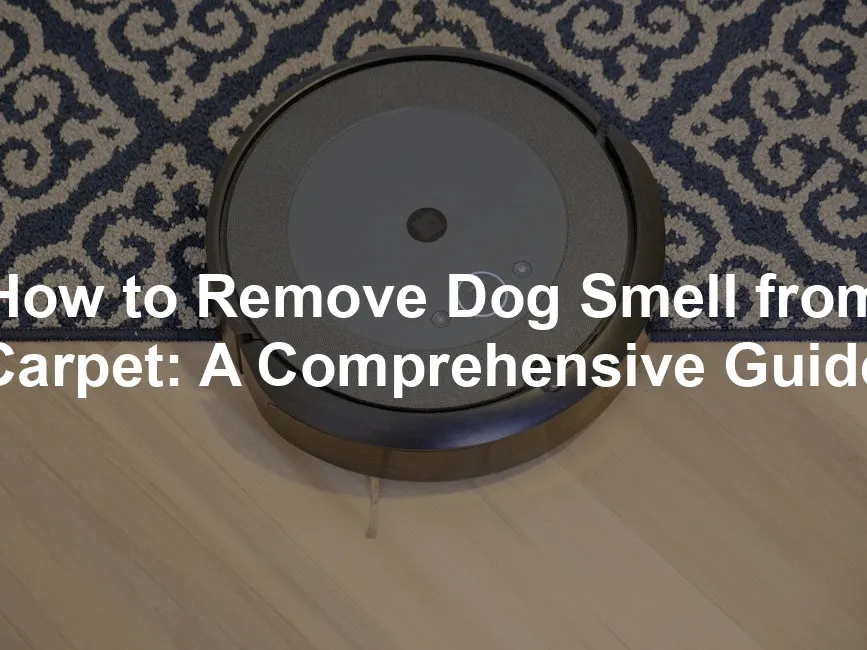Introduction
Dog odors in carpets can be a real challenge for pet owners. If you’ve noticed that familiar smell lingering in your home, you’re not alone. Many pet owners face this issue. Maintaining a fresh-smelling home is essential for comfort and hygiene. A clean space can significantly enhance your living environment. This guide will share effective methods and tips to help you remove those pesky dog smells from your carpets.
Summary and Overview
Dog odors in carpets can come from various sources. These include pet dander, urine, saliva, and even sweat. Unfortunately, deep-set odors can be tough to eliminate, so timely action is crucial. This article will cover both DIY solutions and professional cleaning options. You’ll learn about the steps involved in the odor removal process. Additionally, we will provide preventive measures to keep your home smelling fresh and inviting.
Understanding the Source of Dog Odors
The Causes of Dog Smell in Carpets
Pet dander is a significant contributor to dog odors in carpets. When dogs shed, tiny skin flakes get trapped in the fibers. This can create a musty smell over time. Urine accidents pose another challenge. If not cleaned immediately, urine can seep into the carpet padding. Once it settles there, the odor becomes persistent and hard to remove.
Saliva also plays a role. Dogs often lick and drool, leaving behind bacteria that can create unpleasant smells. Although dogs don’t sweat like humans, they do have sweat glands in their paws and fur. This sweat can transfer to carpets, especially in areas where your dog likes to rest.
The type of carpet material can affect how odors cling. Some fabrics trap smells more than others. Understanding these sources will help you identify and tackle the odors effectively. So, before you start cleaning, take a moment to pinpoint the source of the smell. This will guide your cleaning efforts and enhance your results.

Preparation for Odor Removal
Steps to Prepare Your Carpet
Before tackling dog odors, it’s vital to assess your carpet’s condition. Start by checking for any visible stains or problem areas. Identifying these spots helps you focus your cleaning efforts where they’re needed most.
Next, grab your vacuum cleaner. Vacuuming thoroughly is essential. Use a high-quality vacuum with a HEPA filter to remove pet hair and dander. Move slowly and methodically, covering every inch of the carpet. This step will get rid of loose debris that can trap odors.
If you suspect hidden urine stains, a UV light can be a game-changer. It reveals stains that are often invisible to the naked eye. Once you identify these areas, you can treat them more effectively. A UV Black Light Flashlight is essential for pet owners, revealing those sneaky stains that need your attention!
Finally, gather your cleaning supplies. This may include baking soda, vinegar, or enzymatic cleaners. Preparing your cleaning solutions in advance will streamline the process.
Remember, thorough preparation sets the stage for effective odor removal. Gather your supplies and get ready to make your carpets smell fresh again!

Homemade and Natural Remedies for Removing Dog Odor
Effective Cleaning Solutions
When it comes to removing dog odors from your carpet, natural remedies can be highly effective. One of the easiest solutions is baking soda. Sprinkle a generous amount on the affected areas. Let it sit for several hours or overnight. Baking soda absorbs odors remarkably well. Afterward, vacuum it up to reveal fresher carpets.
Another fantastic option is a vinegar solution. Mix equal parts of white vinegar and water in a spray bottle. Lightly mist the area, then let it air dry. Vinegar neutralizes odors without leaving a harsh scent. It’s a great way to freshen up your space. For a more thorough clean, consider pairing it with White Vinegar, which is a powerhouse for cleaning!
You might also consider using essential oils. A few drops of dog-safe oil mixed with baking soda can enhance the deodorizing effect. Just remember to thoroughly vacuum afterward.
If you’re dealing with stubborn stains, an enzymatic cleaner can be a lifesaver. These products break down the organic matter in dog urine, effectively neutralizing the smell. Follow the instructions on the label for the best results. Products like Nature’s Miracle Stain and Odor Remover are highly recommended.
Using these DIY methods can help you maintain a fresh and inviting home. Start with these natural remedies before resorting to harsher chemical solutions. Your carpets—and your furry friend—will thank you!
For more information on how to use essential oils safely and effectively for your pets, check out this guide on essential oils for flea and tick prevention in dogs.

Commercial Cleaning Products and Enzymatic Cleaners
Choosing the Right Products
When it comes to tackling deep-set odors in carpets, enzymatic cleaners are your best friends. These products contain natural enzymes that break down the proteins in pet waste, effectively neutralizing unpleasant smells. Unlike traditional cleaners, they target the root of the problem, making them ideal for persistent odors.
When selecting commercial cleaning products, look for pet odor eliminators specifically designed for carpets. Products labeled as “enzyme-based” or “biological” are often more effective. Always check the ingredients to ensure they are safe for your pets and children. Avoid cleaners with harsh chemicals, as these can harm your furry friends and leave behind unpleasant residues.
Some recommended products include Nature’s Miracle Stain and Odor Remover and Rocco & Roxie Professional Strength Stain Remover. Both have excellent reviews for effectively eliminating pet smells.
While using commercial cleaners, remember to follow the instructions closely. Test any product on a small, inconspicuous area first to ensure it doesn’t damage your carpet. It’s also wise to ventilate the area during cleaning to reduce any strong odors from the cleaners themselves.
Lastly, always prioritize safety. Keep your pets and children away from treated areas until they are completely dry. By choosing the right products, you can ensure a fresher, cleaner home for you and your furry companions.
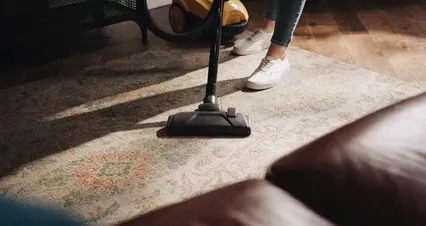
Professional Carpet Cleaning Services
When to Call for Help
Sometimes, despite your best efforts, you may face severe odors or extensive staining that DIY methods can’t handle. In such cases, it’s advisable to call professional carpet cleaning services. They have specialized equipment and expertise to tackle even the toughest odors and stains effectively.
If you notice that the smell persists after multiple cleanings, or if your carpets have been heavily soiled due to multiple accidents, it’s time to seek professional help. These services often use steam cleaning or deep extraction methods that can reach areas your regular cleaning efforts might miss.
Expect a thorough evaluation of your carpets, followed by a tailored cleaning approach. The cost of professional cleaning varies based on the size of the area and the level of service required, but it’s often worth the investment for a fresh-smelling home.
Regularly scheduling professional cleanings every six to nine months helps maintain your carpets and prevent future odor issues. This proactive approach not only improves your home’s ambiance but also extends the life of your carpets. Don’t hesitate to reach out to the experts when the situation demands it. Your carpets—and your nose—will thank you!
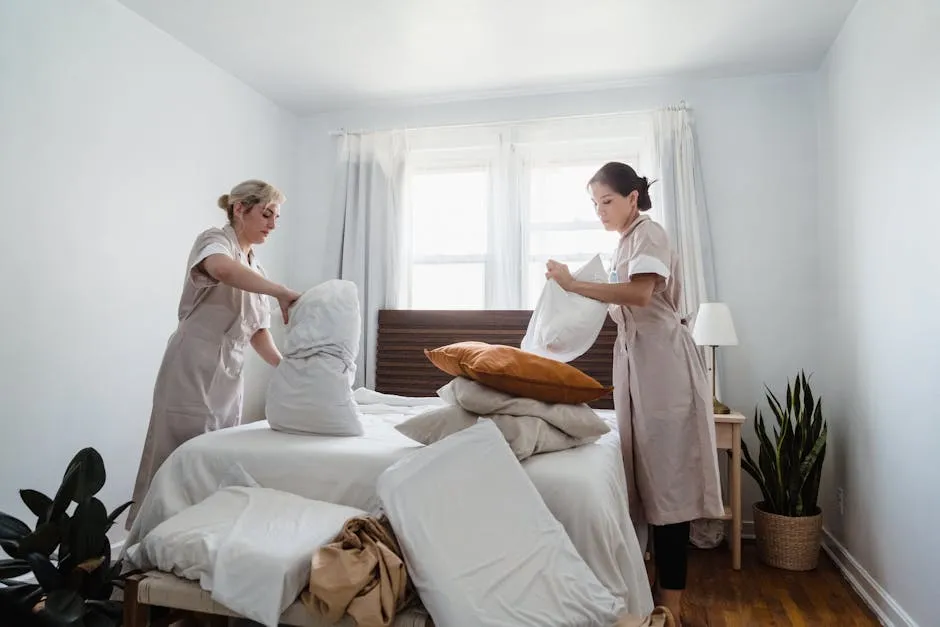
Maintenance Tips for an Odor-Free Home
Preventive Measures
Keeping your home fresh starts with a solid cleaning routine. Regular vacuuming is essential. Aim to vacuum at least twice a week. This helps eliminate pet hair, dander, and dirt that contribute to odors. Make sure to use a vacuum with a HEPA filter. This will capture even the tiniest particles.
In addition to vacuuming, consider creating a cleaning schedule. For example, designate one day for deep cleaning carpets every month. This proactive approach limits the buildup of odors over time. Remember to address high-traffic areas where your dog spends the most time.
Grooming your pet regularly is another key step. Brush your dog often to reduce shedding. This not only helps with dander but also keeps your pet’s coat healthy. Bathing your dog every few weeks can also minimize odors. Just ensure you use pet-friendly shampoos. A Pet Grooming Brush can be a great investment for this purpose!
Air purifiers are great tools for maintaining a fresh environment. They filter out pet dander and other allergens in the air. Consider placing them in rooms where your dog spends the most time. Additionally, using natural deodorizers can help. Baking soda is fantastic for absorbing smells. Simply sprinkle it on carpets, let it sit for a few hours, then vacuum.
Implementing these tips can significantly improve the air quality in your home. A clean space is essential for your comfort and well-being. Establishing a consistent cleaning routine will keep your home smelling fresh and inviting.
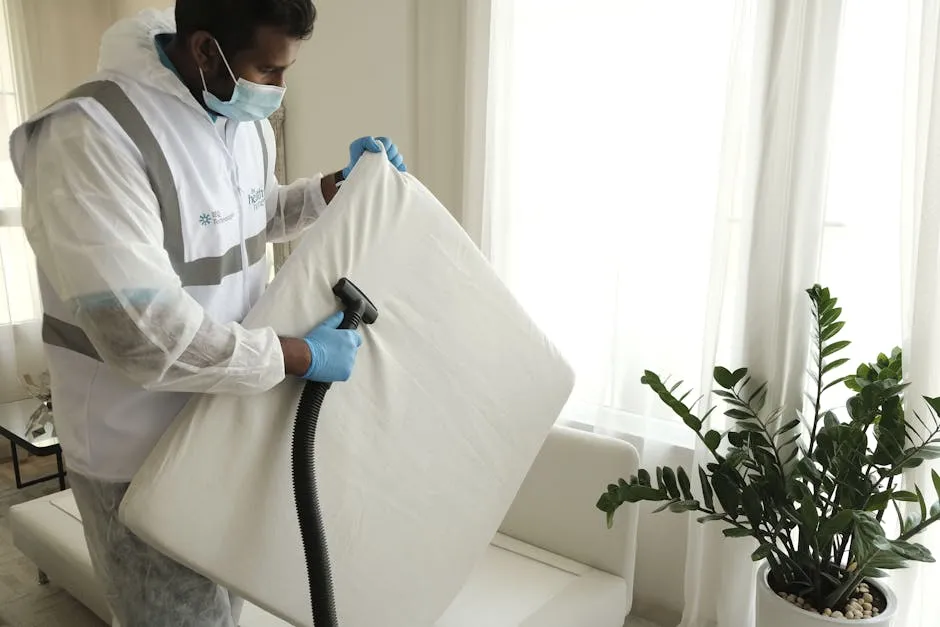
Common Mistakes to Avoid
Pitfalls in Cleaning Carpets
When cleaning carpets, many pet owners make common mistakes. One major pitfall is over-wetting carpets. Excessive moisture can lead to mold growth. Always use the right amount of cleaning solution, and avoid soaking the carpet.
Another mistake is using the wrong cleaning products. Harsh chemicals can damage carpet fibers. Plus, they might leave behind strong smells that attract pets back to the area. Stick to pet-safe cleaners for the best results. For effective cleaning, consider a Bissell ProHeat 2X Revolution Pet Pro Carpet Cleaner for a deep clean!
Ignoring the backing and padding of the carpet is another issue. Odors often seep into these layers, making it hard to eliminate smells completely. Always treat the entire area, not just the surface.
Being mindful of these mistakes can save you time and effort. Focus on proper cleaning techniques to avoid worsening odors. Your carpets—and your nose—will appreciate it!
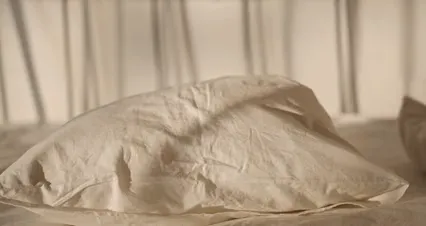
Conclusion
In this guide, we covered effective methods to remove dog odors from carpets. We discussed the importance of acting quickly and using the right techniques. From homemade solutions like baking soda and vinegar to professional cleaning, every step counts.
Timely action can prevent odors from embedding deeply into your carpet fibers. Regular maintenance and proactive measures will help you maintain a fresh-smelling home. Embrace these tips and enjoy a clean, inviting space for both you and your furry friend!
FAQs
How often should I clean my carpets to prevent dog odor?
Clean your carpets at least every 6 to 12 months, depending on your pet’s activity level and the type of carpet.
Can I use vinegar to remove dog odor from my carpet?
Yes, vinegar is effective for neutralizing odors. Dilute it with water and test it on a small area first.
Will professional carpet cleaning remove all traces of dog odor?
While professional cleaning significantly reduces odors, some stubborn smells may linger depending on the carpet’s condition.
How can I tell if the odor has seeped into the carpet padding?
If you notice persistent smells even after cleaning, the odor may have penetrated the padding. Check for dampness or discoloration.
Does baking soda really work for deodorizing carpets?
Absolutely! Baking soda absorbs odors effectively and is a safe option for your carpets.
Please let us know what you think about our content by leaving a comment down below!
Thank you for reading till here 🙂
All images from Pexels

